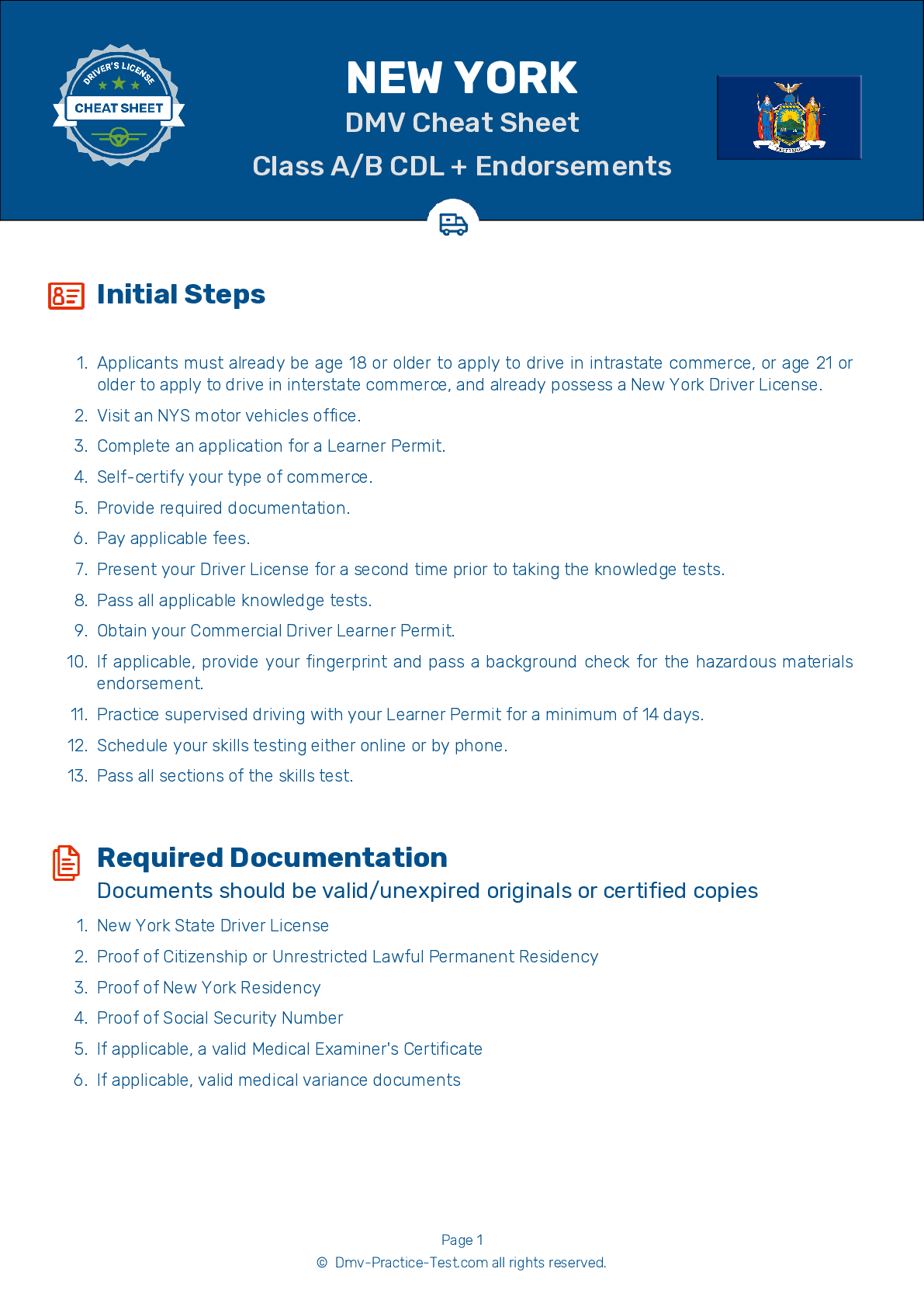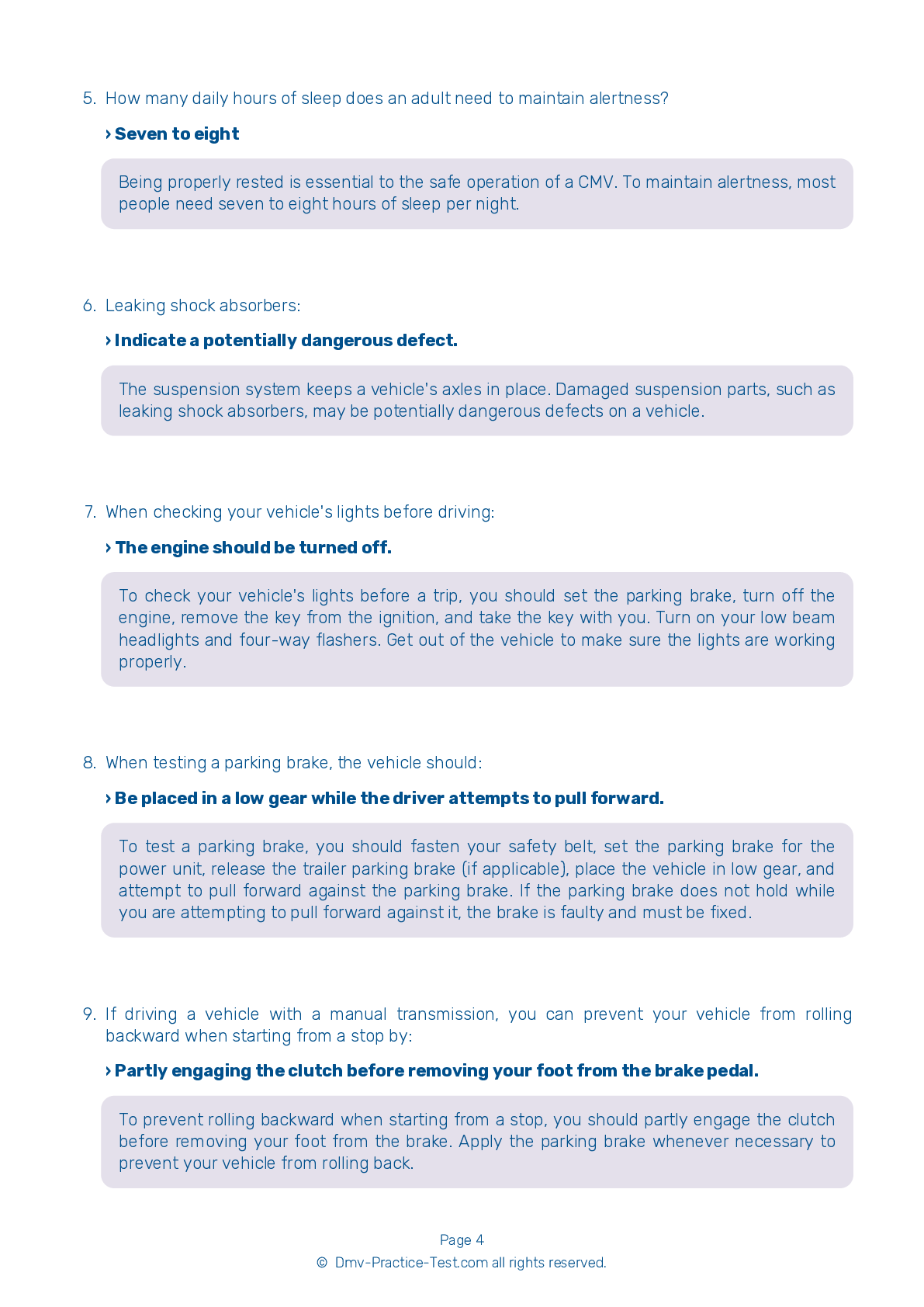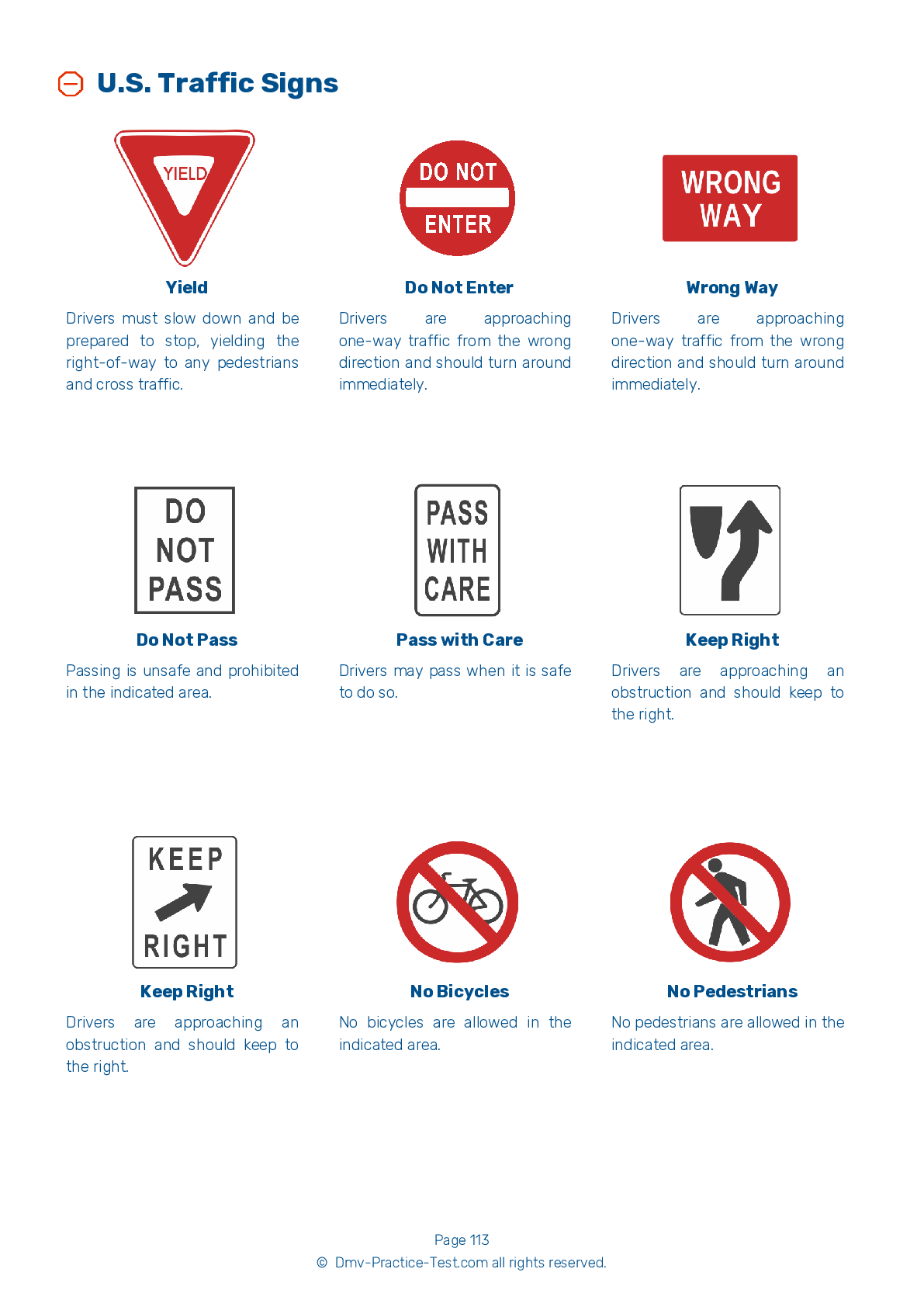Class A Driving Test | New York 2025 #2 Page 2 of 7
Train for FREE online with our New York class A license test. The official exam test consists of several obligatory parts, with all of them checking your knowledge of different blocks of road rules. If you need to obtain a NY CDL class A permit in 2025, practice as much as possible. Free sample tests published on our website will help you check and improve your knowledge and boost your grades. Please bear in mind that CDL class A requirements may vary from state to state.
8 . If you are under the age of 21 with a Class B CDL, you can:
If you are at least 18 years old but still under the age of 21, you may obtain a Class B or C commercial driver license in New York State, but may only drive within the state. You may not drive a school bus or transport hazardous materials.
9 . When checking the engine compartment:
Before inspecting the engine compartment, make sure that the parking brakes are on and/or the wheels are chocked. Check the engine compartment before entering the cab and starting the engine.
10 . One way to overcome the challenges of blind spots is to:
You should make frequent mirror checks to monitor the traffic around you. This should help you notice if surrounding vehicles begin to move into your blind spots.
11 . What is tire load?
Tire load is the maximum safe weight that can be carried by a tire at a specified pressure. This number is stated on the side of each tire.
12 . When you need to brake, how can you warn drivers behind you?
To warn drivers behind you that you are about to slow down, it may be a good idea to first lightly tap your brake pedal a few times to make the brake lights flash.
13 . When encountering fog, you will be safest if you:
Fog can quickly deteriorate drivers' ability to see the road, other drivers, and other hazards. Avoid driving in fog if at all possible.
14 . When inspecting the exhaust system for defects, which of the following should be fixed?
Exhaust system defects can be extremely serious because they may make it possible for poisonous fumes to enter into the cab or sleeper berth. Issues to check for in a pre-trip inspection include loose, broken, or missing exhaust pipes, mufflers, tailpipes, vertical stacks, mounting brackets, clamps, bolts, or nuts; exhaust system parts that are rubbing against fuel system parts, tires, or other moving parts of the vehicle; and exhaust system parts that are leaking.
See the exact questions that will be on the 2025 New York DMV exam.
99.2% of people who use the cheat sheet pass the FIRST TIME
Lillian MCcranie explains how our CDL study guide was helpful in passing the exam and recommends it to everyone.
Cameron tells us how he purchased the CDL exam, and found it to be a useful tool which helped him pass the exam and find a job.



